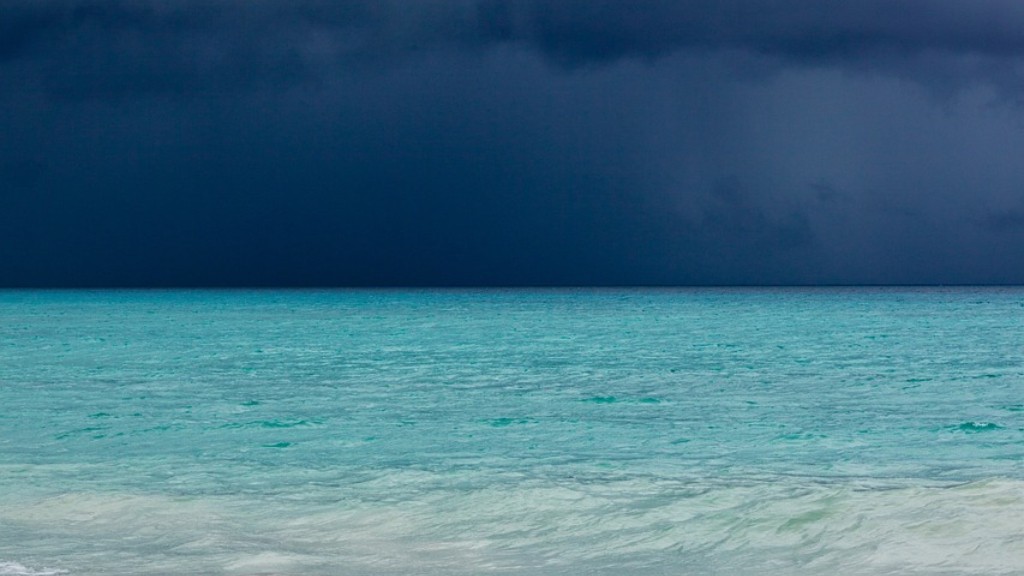The South China Sea is one of the most important waterways in the world. Home to a number of key shipping lanes and oil and gas reserves, the area is also one of the most dangerous in the world. In recent years, the South China Sea has become a hot spot for territorial disputes between countries, as well as increasing competition for control of resources.
China, the Philippines, Vietnam, Brunei, Malaysia and Taiwan are just some of the countries which have competing claims for land, islands, waters and resources within the South China Sea. This has resulted in a number of competing claims, which have all been reinforced by an increasing militarization of the region.
In addition to the territorial disputes, the South China Sea also provides a major economic incentive for the countries involved. It is estimated that the sea contains around 11 billion barrels of oil and 190 trillion cubic feet of natural gas. This has resulted in a number of countries vying for control of the region in order to ensure their access to these resources.
The South China Sea is further complicated by the fact that the waters are incredibly complex and difficult to patrol. With shifting sand bars, reefs and exposed rocks, the waters provide a perfect hiding place for any number of vessels interested in exploiting the region illegally. The presence of large vessels in the area can also significantly impede the passage of smaller vessels, creating safety hazards for smaller ships.
The presence of tension in the South China Sea can also be attributed to the fact that it is a major maritime shipping lane for vessels travelling from one country to another. In 2014, it was estimated that over $5 trillion worth of goods were shipped through the South China Sea. With such a high volume of goods moving through the area, the presence of military vessels patrolling the waters further heightens the danger of the region.
In addition to the economic, territorial and security implications of the South China Sea, the region is also threatened by environmental factors. It has been estimated that almost half of the region is at risk of becoming permanently submerged due to sea level rise caused by climate change. This could have serious implications for the communities which rely on the region for their livelihoods.
The South China Sea is one of the most important, and dangerous, waterways in the world. With a number of competing claims from countries, along with a high volume of goods transported through the region, the area is incredibly complex and dangerous. Despite the numerous challenges, it is essential that the international community works together to ensure the security of the region and the preservation of its valuable resources.
Environmental risks
As the sea level rises due to climate change, the South China Sea is at risk of becoming permanently submerged. This could have a devastating impact on the many coastal communities which rely on its resources for their livelihoods. It is estimated that almost half of the South China Sea could be submerged by 2100, destroying the marine ecosystems and threatening the livelihoods of its inhabitants.
In addition to the risk of sea-level rise, the South China Sea is also threatened by overfishing, marine pollution and habitat destruction. Overfishing has resulted in a dramatic decrease in stock levels, with some species facing the risk of extinction. It is estimated that around 80% of the world’s coral reefs in the South China Sea have been destroyed, with many fish species facing extinction due to high demand and illegal fishing.
Marine pollution is another major concern for the region. Factories and other sources of pollution located near the sea are pouring substances into the water, contaminating marine life and polluting the habitats of many species. This has resulted in a dramatic reduction in biodiversity in the region, with some species facing the risk of extinction.
Finally, the South China Sea is subject to the risk of oil spills. The presence of large ships in the area and the possibility of accidents or illegal activities have significantly increased the risk of oil spills. If an oil spill were to occur, it could have an irreversible and devastating impact on the environment.
Security risks
The presence of military vessels in the South China Sea further heightens the danger of the region. With a number of countries vying for control of the resources located there and smaller vessels looking to exploit the area illegally, the risk of conflict breaking out is ever-present. This has caused a number of countries to increase their military presence in the region, further escalating tensions.
In addition to the risk of conflict, there is also the risk that other nations could interfere in the region. Given the strategic importance of the South China Sea, it is likely that other countries will attempt to exert their influence in the region, potentially sparking conflict between the various claimants.
Furthermore, the presence of territorial disputes in the region has resulted in a number of countries establishing military bases in the area. This further increases the risk of conflict, as the bases could potentially be used to launch attacks or extend the countries’ control over the region.
Finally, the waters of the South China Sea are incredibly complex and difficult to patrol. With shifting sand bars, reefs and exposed rocks, the waters provide a perfect hiding place for any number of vessels interested in exploiting the region illegally. Without adequate surveillance and monitoring of the region, it could be possible for vessels to operate undetected and present a threat to the safety and security of the region.
Legal disputes
The presence of territorial disputes in the South China Sea is one of the primary causes of tension in the region. Countries such as China, the Philippines, Vietnam, Brunei, Malaysia and Taiwan are all vying for control of the region’s land, islands, waters and resources. These disputes have been further aggravated by an increasing militarisation of the region, leading to a heightened risk of conflict.
In addition to the territorial disputes, there are also a number of legal disputes which have arisen in the region. In 2016, an international tribunal ruled in favour of the Philippines in a dispute over the ownership of some of the islands in the South China Sea. This ruling was rejected by the Chinese government, leading to increased tension in the region.
Furthermore, the South China Sea has also become a hot spot for legal disputes over the right to exploit the area’s resources. With a number of countries vying for control of these resources, there have been a number of unresolved legal disputes over the ownership of oil, gas and mineral rights. This has resulted in companies from different countries vying for control of the same resources, leading to further tension in the region.
Finally, there is the potential for legal disputes over the exploitation of living resources. Many of the countries which claim ownership of the South China Sea also claim the right to exploit the living resources in the area. This has led to a number of unresolved legal disputes over the right to exploit certain species, as well as the right to restrict access to certain areas.
International Cooperation
In order to ensure the security of the South China Sea and the preservation of its resources, it is essential that the international community works together to address the tensions in the area. This includes facilitating dialogue between the countries involved in the territorial disputes, as well as working to ensure the protection of the region’s resources.
In addition to dialogue, the international community should also look to develop a multifaceted approach to managing the tension in the South China Sea. This could include the development of a regional maritime security framework, the adoption of systematic patrols of the region and the negotiation of binding agreements between the countries involved.
Finally, the international community should also look to increase economic and trade cooperation in the region. By increasing economic and trade links between the countries involved in the territorial disputes, it may be possible to reduce the tensions in the region and create an environment in which the countries are able to cooperate more effectively.
The South China Sea is one of the most important, and dangerous, waterways in the world. With a number of competing claims from countries, along with a high volume of goods transported through the region, the area is incredibly complex and dangerous. Despite the numerous challenges, it is essential that the international community works together to ensure the security of the region and the preservation of its valuable resources.





